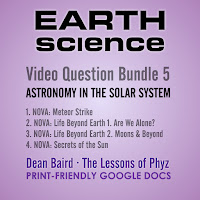P R O G R A M S
1. METEOR STRIKE
Scientists hunt for debris from the 7,000-ton asteroid that crashed in Russia, searching for clues to its origin and makeup; a review of past explosions, from Tunguska to the asteroid that extinguished the dinosaurs 65 million years ago.
2. FINDING LIFE BEYOND EARTH Part 1: ARE WE ALONE?
Scientists are on the verge of answering one of the greatest questions in history: Are we alone? Finding Life Beyond Earth immerses audiences in the sights and sounds of alien worlds, while top astrobiologists explain how these places are changing how we think about the potential for life in our solar system. We used to think our neighboring planets and moons were fairly boring—mostly cold, dead rocks where life could never take hold. Today, however, the solar system looks wilder than we ever imagined. Powerful telescopes and unmanned space missions have revealed a wide range of dynamic environments—atmospheres thick with organic molecules, active volcanoes, and vast saltwater oceans. This ongoing revolution is forcing scientists to expand their ideas about what kinds of worlds could support life.
Scientists are on the verge of answering one of the greatest questions in history: Are we alone? Finding Life Beyond Earth immerses audiences in the sights and sounds of alien worlds, while top astrobiologists explain how these places are changing how we think about the potential for life in our solar system. We used to think our neighboring planets and moons were fairly boring—mostly cold, dead rocks where life could never take hold. Today, however, the solar system looks wilder than we ever imagined. Powerful telescopes and unmanned space missions have revealed a wide range of dynamic environments—atmospheres thick with organic molecules, active volcanoes, and vast saltwater oceans. This ongoing revolution is forcing scientists to expand their ideas about what kinds of worlds could support life.
4. SECRETS OF THE SUN
Now, with the help of new spacecraft and Earth-based telescopes, scientists are seeing the Sun as they never have before and even re-creating what happens at the very center of the Sun. Their work will help us understand aspects of the sun that have puzzled scientists for decades. Secrets of the Sun reveals a bright new dawn in our understanding of our nearest star, one that might help keep our planet from going dark.
Question sets are available for individual programs. The complete bundle is available at a discounted price. Student documents and answer keys are provided as Google Docs on Google Drive.

No comments:
Post a Comment